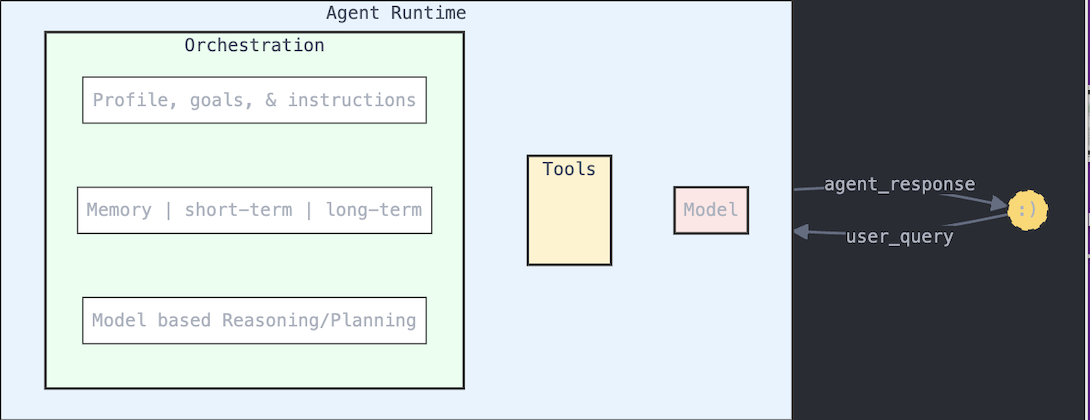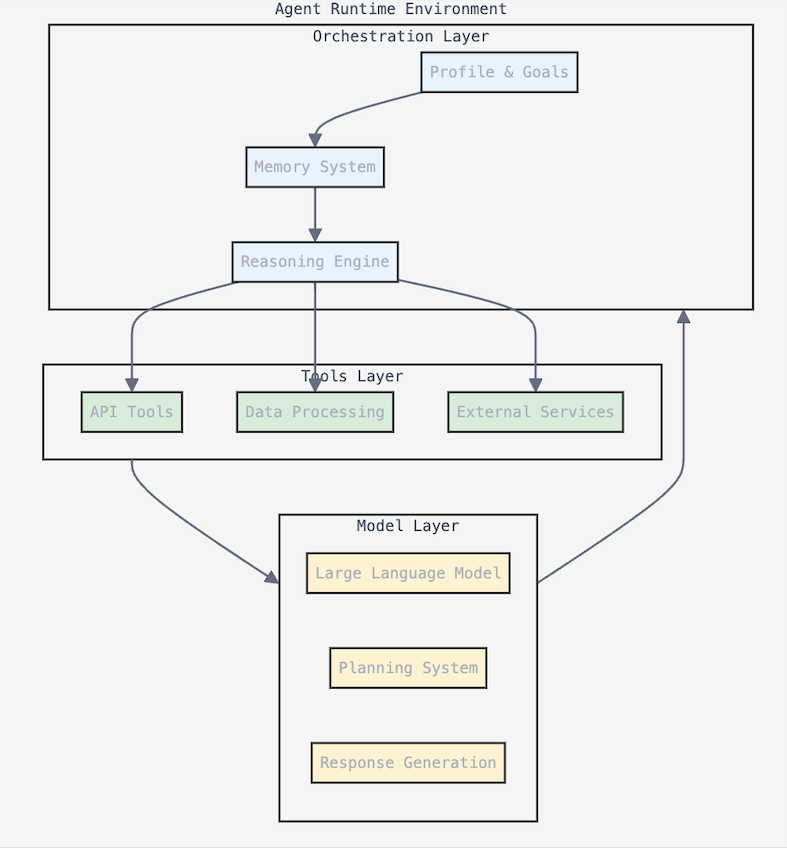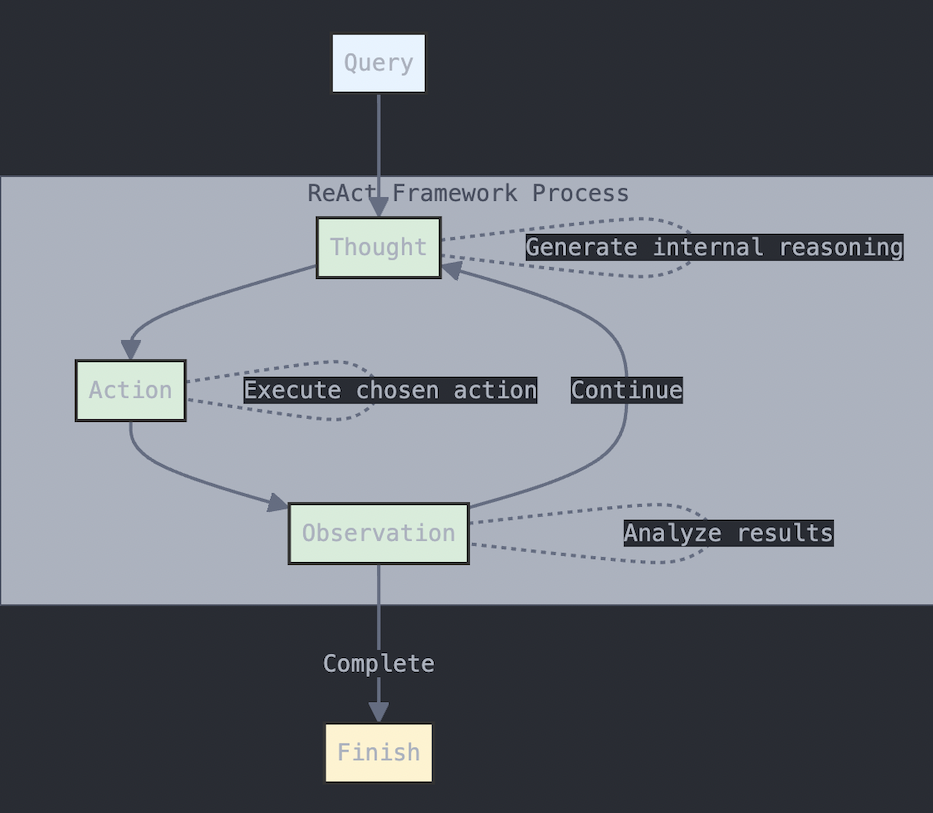Foundation Core Concepts
Introduction to AI Agents
In the rapidly evolving landscape of artificial intelligence, AI agents represent a significant leap beyond conventional software applications. At their core, agents are software entities designed to perform autonomous actions by:
- Observing their environment
- Making decisions based on observations
- Taking actions to achieve specific goals
- Learning from outcomes
The Evolution of AI Systems
AI technologies have progressed significantly. Understanding the stages helps clarify how agents go beyond traditional software:
-
Traditional Applications
- Rely on predefined rules or fixed logic.
- Perform predictable tasks with minimal flexibility.
- Example: Basic command-line programs or simple scripts.
-
AI-Enhanced Applications
- Use machine learning or large language models (LLMs) to provide better responses.
- Still mostly follow predefined flows, with small amounts of context awareness.
- Example: Chatbots that generate dynamic replies but can’t independently plan multi-step processes.
-
Agentic Systems
- Operate with a high degree of autonomy, adapting to changing conditions.
- Can create and refine their own plans over multiple steps.
- Example: A research bot that iteratively retrieves information, analyzes it, and updates its plan to find the best solution.
Understanding System Types
Modern AI implementations generally fall into three categories:
-
Automations
-
Execute predefined, rule-based tasks
-
Follow fixed decision trees, best for deterministic tasks
-
Best for: Repetitive, well-defined tasks
-
Example:
def process_request(type):
if type == "email":
send_email()
elif type == "report":
generate_report()
-
-
AI Workflows
-
Combine LLMs with predefined processes
-
Follow structured but flexible paths
-
Best for: Complex but predictable tasks
-
Example:
async def handle_customer_query(query):
intent = await llm.classify_intent(query)
response = await llm.generate_response(intent)
if need_human_review(response):
return escalate_to_human()
return response
-
-
True AI Agents
-
Dynamically direct their own processes
-
Maintain control over task execution
-
Best for: Open-ended, adaptive tasks
-
Example:
class ResearchAgent:
async def solve_problem(self, query):
plan = await self.create_plan(query)
while not self.goal_achieved():
next_step = self.determine_next_step(plan)
result = await self.execute_step(next_step)
plan = self.adjust_plan(result)
return self.compile_results()
-
Core Components of an Agent
A generic agent architecture, consists of several key components:

-
Model Layer
- Central decision-making engine
- Processes input and context
- Generates reasoning and plans
-
Orchestration Layer
- Manages the execution flow
- Coordinates tool usage
- Monitors progress towards goals
-
Memory System
- Short-term working memory
- Long-term knowledge storage
- Context retention
-
Tool Integration
- External API connections
- Data processing capabilities
- Action execution interfaces

The ReAct Framework
AI agents typically operate using the ReAct (Reason-Action) framework, which follows a cyclical pattern:
Framework Components:
-
Thought
- Internal reasoning about the current state
- Analysis of available information
- Planning next steps
-
Action
- Execution of chosen steps
- Tool usage and integration
- External system interaction
-
Observation
- Gathering results
- Analyzing outcomes
- Updating understandingd
